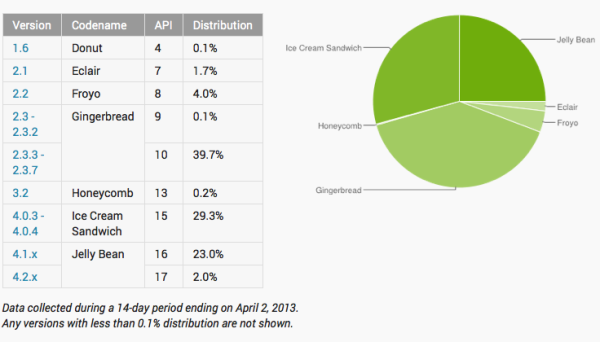Potential iOS Market For Google Now Is 2.5X Larger Than Android “Now” Base
Google Now for iOS and Android are almost identical in their look at feel. And aside from a few “cards,” the same is true of their content. But, there are some differences behind the scenes worth noting: one of them is the fact that with its launch on iOS this morning, Google Now is available […]
 Google Now for iOS and Android are almost identical in their look at feel. And aside from a few “cards,” the same is true of their content. But, there are some differences behind the scenes worth noting: one of them is the fact that with its launch on iOS this morning, Google Now is available to roughly 2.5 times more people than it is on Android.
Google Now for iOS and Android are almost identical in their look at feel. And aside from a few “cards,” the same is true of their content. But, there are some differences behind the scenes worth noting: one of them is the fact that with its launch on iOS this morning, Google Now is available to roughly 2.5 times more people than it is on Android.
Google Now for Android is only available on those devices that feature Jelly Bean 4.1 or 4.2 (4.3 is apparently coming). What that means as a practical matter is that fewer than 200 million people out of more than 750 million Android devices activated can use Google Now.
In March, Google CEO Larry Page said that there were 750 million Android activations (on their way to 1 billion this year). Jelly Bean 4.1 and above are only on 25 percent of Android devices, according to the Android developer site. The Android marketplace is highly fragmented.
What that means is Google Now for Android is only available to this 25 percent or roughly 187.5 million devices. By comparison, Google Now for iOS is available to all devices running iOS 5 and above.
According to statements in Q1 2013 from Apple CEO Tim Cook, there have been more than 500 million iOS devices sold to date. At least 300 million are running iOS 6. Fewer than 5 percent of iOS devices are running a version of the operating system that pre-dates iOS 5. That’s according to Chitika data released last year.
Accordingly, that means roughly 475 million iOS devices can potentially use the new Google Search app with Google Now. That marks a huge expansion of the audience for Google Now.
On a more technical level, Google Now for iOS won’t be continuously syncing in the background (except for location), and it won’t use the iOS notification center, as it does on Android (according to The Verge). However, Android Jelly Bean users who also have iPhones won’t really notice much of a difference between the two user experiences overall.
See our other Google Now on iOS stories from today:
Contributing authors are invited to create content for Search Engine Land and are chosen for their expertise and contribution to the search community. Our contributors work under the oversight of the editorial staff and contributions are checked for quality and relevance to our readers. The opinions they express are their own.
Related stories

